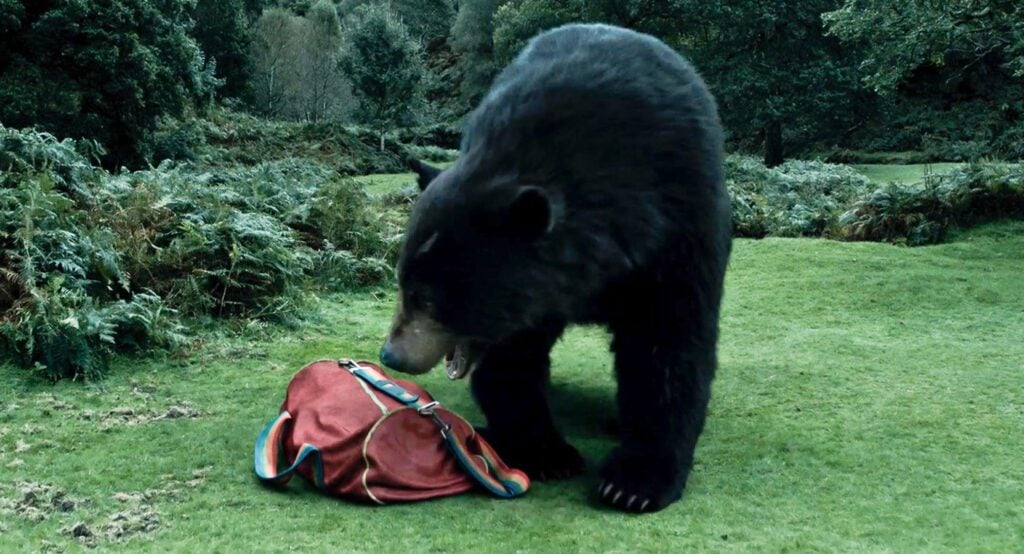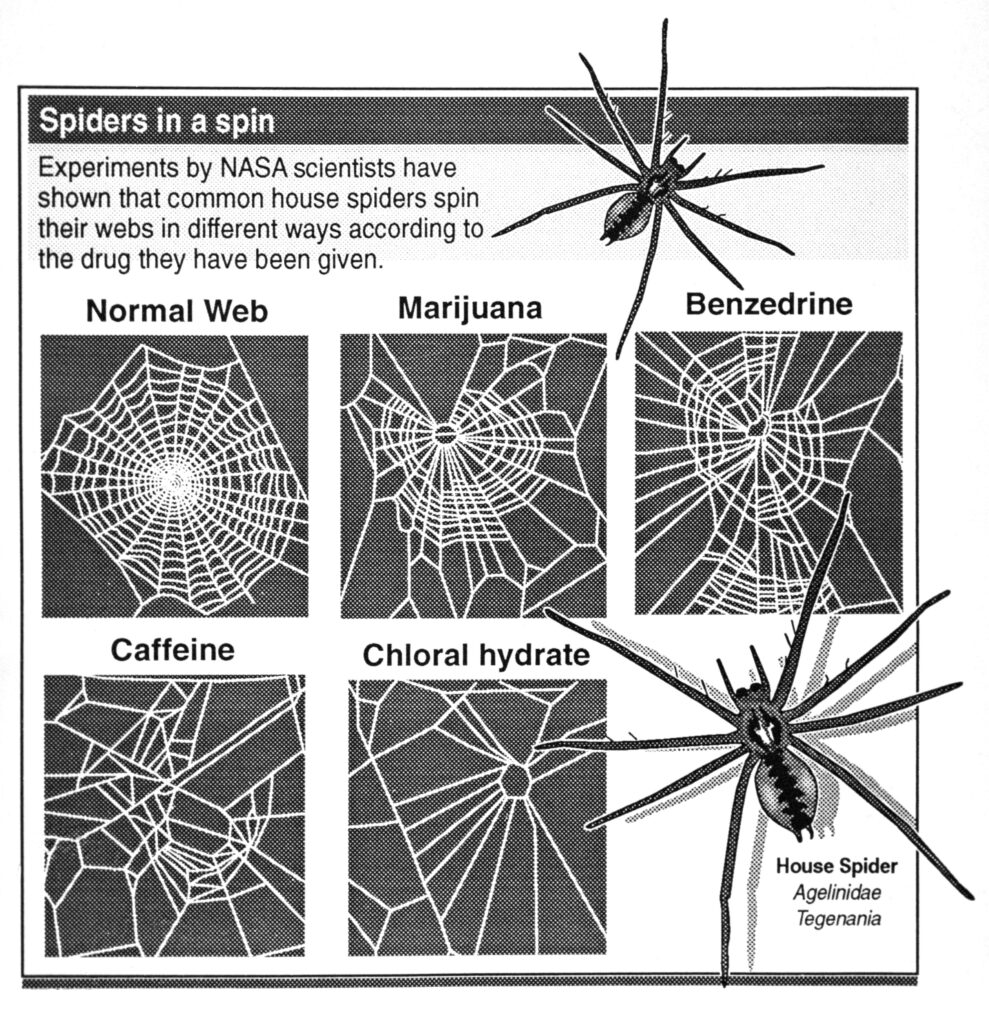Cocaine Bear, the much-anticipated dark comedy film starring Elizabeth Banks, has just been released in movie theaters.
It tells the true story of a bear who died after ingesting a large amount of cocaine in the Tennesse wilderness in 1985. A bag full of the drug had been left by smugglers. It’s thought that the bear ate 75 pounds (34 kilograms) of it. The animal subsequently became known in popular culture as “Pablo Eskobear.”
After being found dead in northern Georgia, the bear was stuffed and displayed in a shopping mall in Kentucky. Their taxidermied body remains there to this day.
The “cocaine bear” is far from the only animal to have consumed recreational drugs. While this case was an accident, there have been a number of experiments conducted throughout history that saw animals forced to consume illegal drugs in the name of “science.”

What follows is a brief history of recreational drug use in research experiments. And, what happened to the animals who fell victim.
Tusko the elephant
In 1962, an elephant named Tusko living at Oklahoma Zoo was given LSD.
LSD is a powerful psychedelic drug, which, in humans, can cause hallucinations and feelings of euphoria, anxiety, and confusion.
The study was conducted at Oklahoma University by a researcher named Dr Louis Jolyon “Jolly” West, as well as two of his colleagues.
At the time, LSD had yet to enter the black market as a street drug. The point of the experiment was to test whether it would induce a condition called “musth” in Tusko. Musth is the name given to a period of heightened testosterone production and high aggression, which occurs naturally in bull elephants. It’s unclear why Dr West thought the condition might have a link with LSD.
Researchers injected Tusko with 297mg of the drug. This has been identified as a huge amount for his size. And 30 times what the dose for a theoretical three-tonne human would be.
Soon after being given the drug, Tusko began violently shaking. He defecated, trumpeted, and fell over, and his legs became stiff. He also bit his tongue and struggled to breathe. After 20 minutes, the researchers injected Tusko with Thorazine, an anti-psychotic drug, in an attempt to calm him down. A short while later, he was given a tranquilizer. The whole experiment lasted an hour and 40 minutes, at which point Tusko was dead.
Dolphins given LSD
Tusko was just one of a number of animals to have been given LSD at that time. Also in the 1960s, scientists gave the drug to dolphins in the hope of being able to communicate with them.
John C. Lilly, a neuroscientist, led the NASA-funded experiment. It saw researchers cohabit with three dolphins – named Sissy, Peter, and Pamela – in a facility that came to be known as “Dolphin House.”
Previously, Lilly had conducted experiments on dolphins by inserting probes into their brains, but he had stopped this practice when the anesthetic he used killed some of the animals.
He decided to use LSD as a new tool to test the impact on the dolphins’ cognition and communication. Lilly described in 1967 how the drug made the animals more vocal, and that “an appropriate exchange” began to take place.
In the end, however, the experiment failed, and researchers were unable to gauge meaning in the dolphins’ vocalizations. Reports have stated that, during the experiment, the dolphin named Peter became “sexually interested” in a female researcher. She later admitted herself that she gave Peter manual stimulation, saying she “wasn’t uncomfortable” with it.
NASA spiders

In the 1990s, NASA gave spiders a variety of drugs to test what effect they would have on their ability to make webs.
The drugs included marijuana, benzedrine, caffeine, and chloral hydrate. Researchers found that “the more toxic” the chemical, the more “deformed” the web looks in comparison with a normal web.
The spiders given marijana were observed to have given up on the web half way through. Those given chloral hydrate, a powerful sedative, also stopped before finishing.
Rats given stimulants
Two research papers published in 2011 detailed experiments in which rats were given both methamphetamine and cocaine. Both experiments were testing whether ingesting the drugs would impact their music preferences.
In the first study, rats were placed in a box and forced to listen to the Miles Davis song Four for 90 minutes straight. While they were in the box, scientists measured how much they moved around. Half the rats were given methamphetamine after a few days, and they became more active than those that didn’t.
After a week, researchers stopped giving them the drug. They were then put in a new room where the same song was playing. It was found that those who associated the music with being on drugs moved around more than the others, and they also had higher levels of dopamine.
In a similar experiment, mice were given a dial that allowed them to choose whether music played or not, and scientists measured their song preferences.
The animals were then given cocaine and subjected to their least favorite music. When they were off drugs, they would intentionally select the song that they previously hated. This, scientists said, demonstrated that rats associated music with experiences, and showed that they sought out the same experience when it was over.
Puppies injected with cocaine
In February 2022, it was reported that $2.3 million in taxpayer money was being spent on experiments that saw puppies injected with cocaine in the US.
An organization called the White Coat Waste Project (WCW) accessed information on the experiments through the Freedom of Information Act (FOIA).
It was claimed that the National Institute on Drug Abuse (NIDA) ran tests on seven beagle puppies, who were just six months old.
The dogs were reportedly surgically implanted with titanium vascular access ports, which measured their vital signs as they were injected with cocaine “again and again for months.”
The experiment ran from September 2020 until September 2021. After it finished, the puppies were either sent for other experiments or euthanized.






